There are little secrets hidden all over Dunedin. For example, there’s the recently-rediscovered trout hatching ponds at Logan Park. There’s magnificent early settler ruins tucked away on people’s properties. There are shipwrecks.
And now, thanks to a fellow adventurer, I was to discover yet one more, this time hidden in the back yard of an industrial workshop in Dunedin City’s wharf district. So three of us met up (with permission from the owner) to check out this interesting find.
Stepping in to the yard there was no doubt as to what we were there to see. For tucked just around the corner was the enormous disembodied stern end of a ship, oyster-crusted propeller pointing at the sky.

This was not your usual scrap heap find. Somebody went through a lot of trouble to get this here. But what would anyone want with the 23-tonne back end of a rusty old boat?
Turns out this isn’t just any boat. The was the Te Whaka, which for 75 years had been a well known feature of Lyttelton Harbour, and whose drawn out afterlife would eventually bring it here.
Though Christchurch was not so deficient on the harbour front as New Plymouth, the shallow Lyttelton Harbour still presented difficulties for larger vessels. Much to the chagrin of their passengers, the first four ships were forced to stand off the wharf while the settlers and their belongings were ferried ashore in smaller boats.
By the 1870s the lack of adequate docking for larger vessels at Lyttelton had become a pressing issue, with Cantabrian settlers clamouring for a more efficient way to get their wool and grain product aboard. The first harbour dredge vessel, arriving in 1876, was the Erskine.
But then the Long Depression of the 1880s and 1890s hit, and the Lyttelton Harbour Board was forced to take the Erskine out of service before finally selling it. It was 10 years before the next dredger would arrive, the Manchester. But like the Erskine she would have difficulty with the wharf edges and would leave a 5 metre wide ridge of silt that caused constant issues at low tide.
By 1909 the Harbour Board could deny it no longer: they needed something custom made!
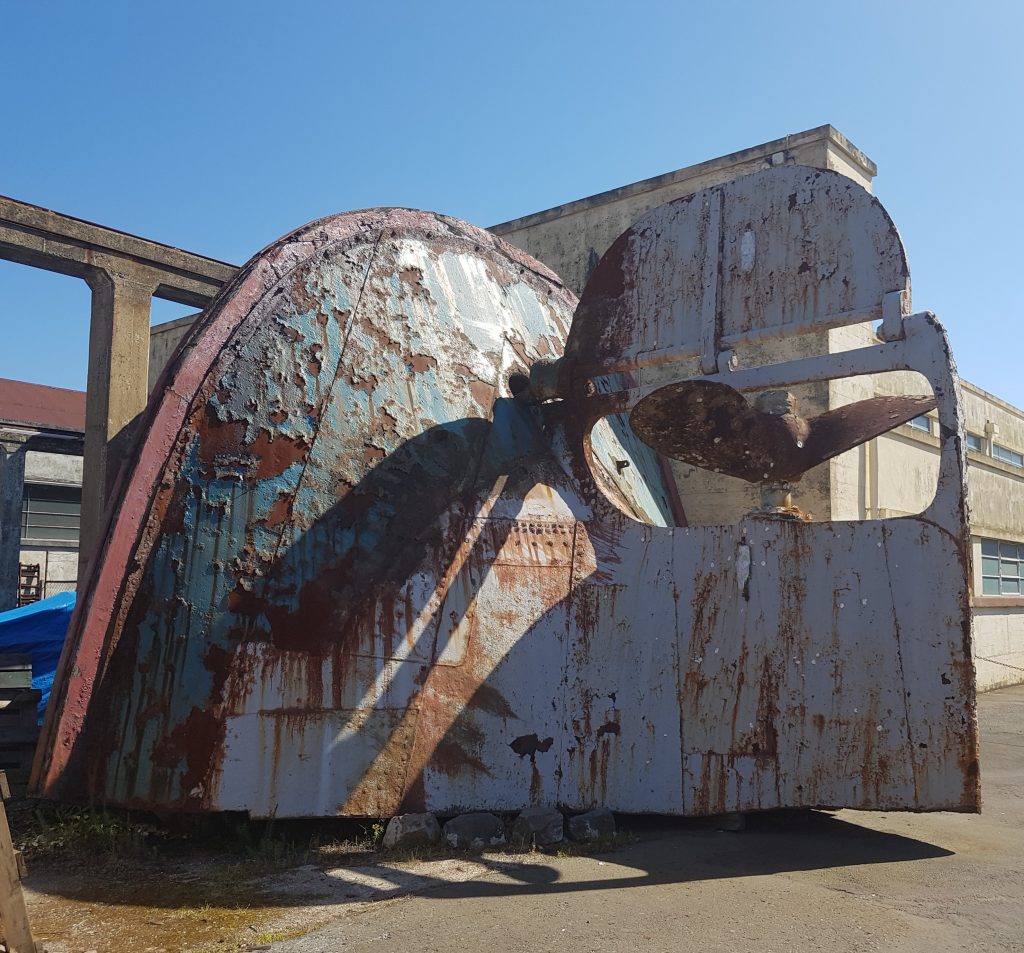
So job No. 191 was commissioned from the Ferguson Brothers of Port Glasgow. Later to be christened Te Whaka (after Te Whaka Raupo, the Maori name for Lyttelton Harbour) she was to measure 36.6 metres in length and able to work to a depth of just over 12 metres. She was rigged for towing so she could do back up duty as a tug, and additionally fitted with a fire pump and hose.
It was the delivery of this specialised equipment combined with strike action which delayed her departure for New Zealand, meaning that weather conditions would be far from ideal for her journey. In fact the little vessel would be dogged by storms and bad luck for much of the 104 day voyage, ending with an anxious wait for the Harbour Board as their overdue £12,000 investment battled heavy storms across the Tasman.
She reportedly made a dismal sight as she limped into the harbour, rusted and weather-beaten. The Harbour Board set about returning her to tip-top shape and on 20 September 1910 she finally began work.

Te Whaka had a few career highlights over the years. Her fire fighting capabilities were called on in 1915 when the New Zealand Shipping Company’s wool store went up in flames, and again in 1917 when a visiting foreign cargo ship caught fire on the water. In 1933 the flax on board The Cumberland apparently spontaneously combusted, and Te Whaka was instrumental in saving the frozen mutton she also carried.
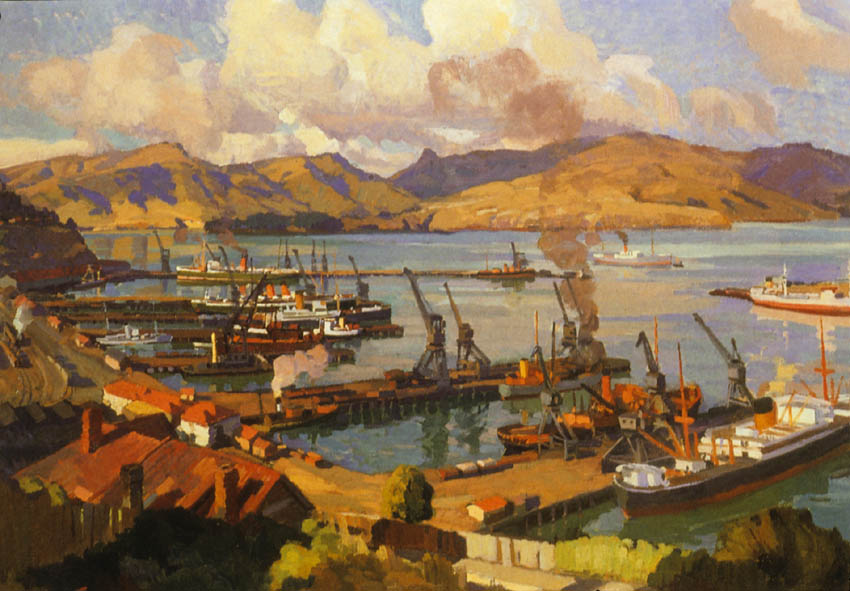
During the Second World War as part of the Lyttelton “Emergency Precautions Scheme” she participated in an exercise that included ambulance workers, firemen and the Lyttelton Home Guard. Five simulated “bombs” were let off and all services rushed to the scene of the imaginary attack.
In 1969 she salvaged an entire fishing boat from the sea floor after it sank off Godley Head, towing it back into port for repair.
By 1987 she had practically fulfilled her purpose. The harbour channels were wide and deep and so the Harbour Board put her out of service. Working life over, her afterlife began.
It seems a bit strange that this fixture of Lyttelton Harbour should end up down in Dunedin, and even stranger that she almost ended up in Auckland.
Much effort was expended too keep her in her historic home. When the Lyttelton Port Company put her up for tender in 1992, the Norwich Quay Historic Precinct Society sought to purchase her for integration into a maritime museum on the harbour. Much to their dismay the Auckland Maritime Museum won the tender, intending to display her along with other historic vessels at Hobson Wharf.
The Mayor of Banks Peninsula pleaded with the Auckland Maritime Museum to forego its option and allow the vessel to remain in Canterbury, to which the latter agreed provided the locals promised to care for her. But now there was another battle to fight, as the Lyttelton Port Company would not allow her to be kept in the Inner Harbour as they intended to free up the space for their commercial operations. So the Lyttelton and Christchurch City Councils searched for a new mooring for the evicted steamer, while the Norwich Quay Historic Precinct Society protested that the inability to keep Te Whaka in the harbour would seriously jeopardise the proposed Maritime Museum.
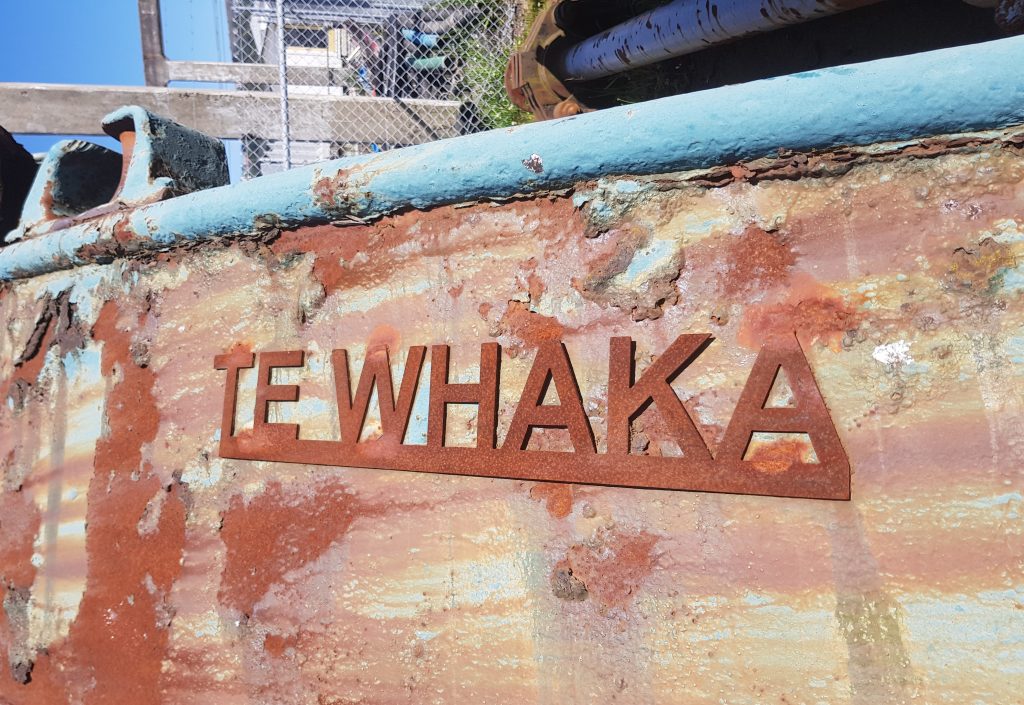
After a year of negotiations the Lyttelton Port Company announced the sale of Te Whaka to the Otago Maritime Trust, which sparked a new debate over whether the company (which had been formed in 1877 after the Lyttelton Harbour Board was disbanded) technically even owned the ship.
But all objections eventually came to naught and in 1994 she was sold to the Te Whaka Maritime Heritage Trust, which received a $50,000 grant from the Dunedin City Council in order to convert her to a passenger steamer – an attraction akin to Queenstown’s Earnslaw. But further funding failed to materialise and she sat unused in the Steamer Basin for 18 years.
Finally in 2012 the decision was made to sell her as scrap Everitt Enterprises. And so she was pulled up on to the Birch Street slip and broken down.
One final bid to preserve her memory remained. The owner of local company Zeal Steel succeeded in the purchase of 50 tonnes of the dissected Te Whaka, including “the bow, stern amidships, steam crane pillar section, funnel, vents, propeller shaft and numerous sections of hull plating and deck”.
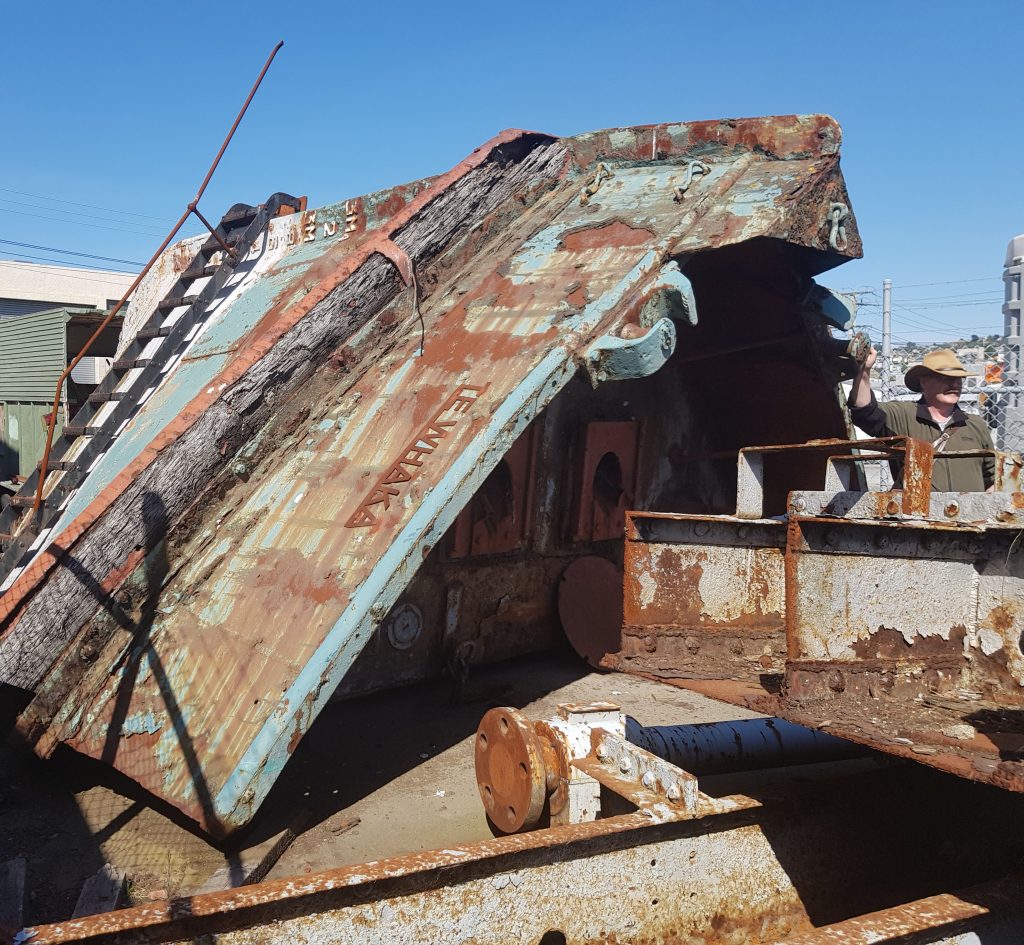
Transporting the heavy stern to this yard was a mission in itself. The four hour operation even required Delta to come out and lift up the power lines to allow safe access.
A proposal exists to mount these salvaged sections upright with a platform between, and add an access ladder so the public can have their very own steamship experience. Another idea was to mount the bow on four pillars and attach stairs so that people could “do the scene from the Titanic movie”.
Parts of the stern were re-purposed in 2017 to form part of the feature wall under the Jetty Street overbridge abutment, part of the more general hipsterisation of the Vogel Street area. The work also recalls Jetty Street’s past as, well, a jetty.

Te Whaka‘s journey to this place has been long and many times fraught. She battled relentless storms to make her way from the distant shore of Scotland to our growing new country. She fought fires and hewed out a harbour. And in retirement she was the focus of clashes of ideals and competing historic organisations, all ending in a rather undignified dismantling.
Luckily we still have one last chance to honour her memory, but will we make the most of it?
References:
Rarely a Dull Moment – The Story of the Lyttelton Steam Dredge “Te Whaka” New Zealand Marine News 1994 Volume 43 Number 1 Pages 33-35, 42-50 ( Reference ID 43010006 )
NEW DREDGER TE WHAKA. Press, Volume LXVI, Issue 13828, 3 September 1910
LYTTELTON FIRE. Sun, Volume II, Issue 556, 20 November 1915
SENSATION AT LYTTELTON Evening Post, Volume XCIV, Issue 144, 15 December 1917
FIRE IN STEAMER New Zealand Herald, Volume LXX, Issue 21413, 10 February 1933
PRECAUTIONS FOR EMERGENCY Press, Volume LXXVII, Issue 23280, 17 March 1941
‘Save the Vessels’ by Gerard Campbell, The Press 30 July 1992
Historic dredge ‘to keep Port links’ by Pam Morton, The Press 31 November 1992
Mayor seeks to keep dredge in Canty by Gerard Campbell, The Press 22 December 1992
Three options for mooring of historic steam dredge by Gerard Campbell, The Press 10 February 1993
Port’s denial risk for sea museum, The Press 2 October 1993
Steam dredge bound for southern berth, The Press 11 February 1994
Dredge ownership ‘in doubt’ by Anna Dunbar, The Press 24 February 1994
Last-ditch attempt to keep dredge, The Press 26 February 1994
Ship’s bow to become sculpture By Nigel Benson
Piece of maritime history moved By Nigel Benson
‘Te Whaka’ could have become a major drawcard for region by Paul Jeffery
Extending urban stories through artistic research: the case of Jetty Street by Crystal Victoria Filep
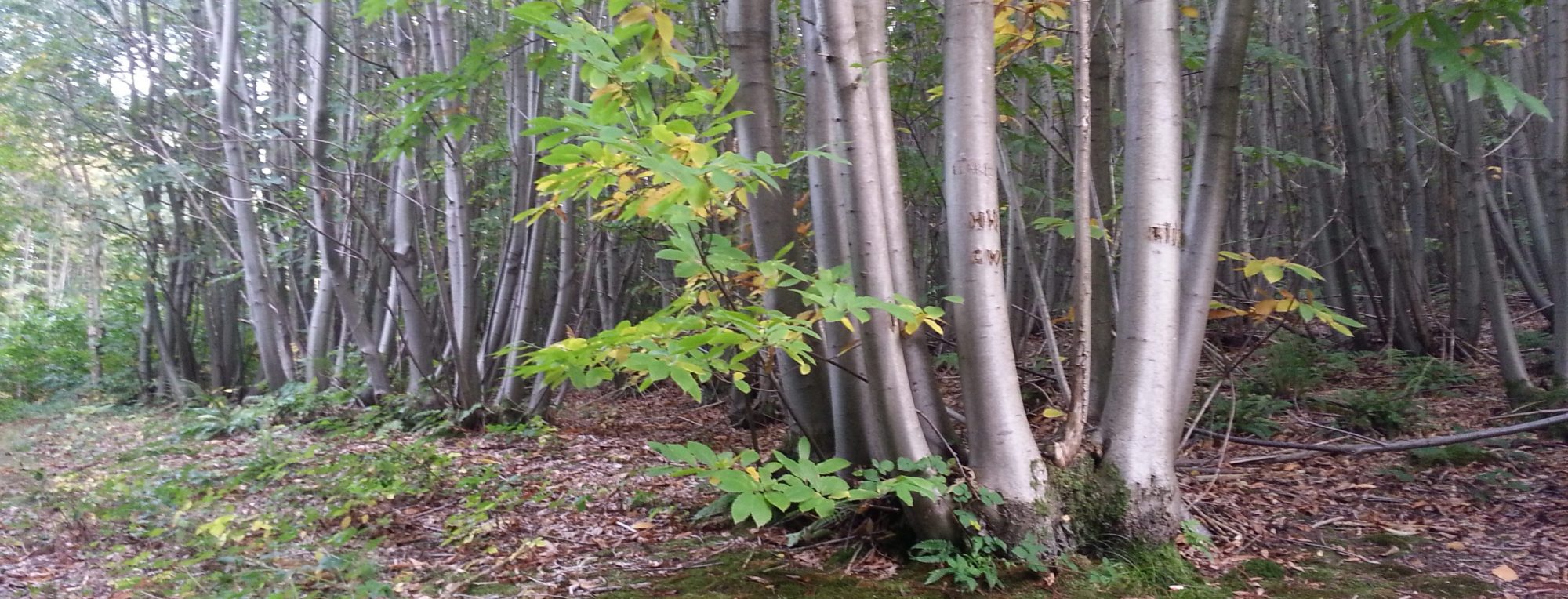


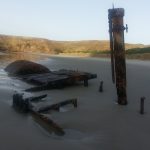
Hello – is Te Whaka what I believed was called the dredge Wanganaui nd is currently rusting away ahore at Whangaparapara, Great Barrier Island?
Kia Ora,
I’ve been to Dunedin from 2005-2009 as an international student. As a ship-enthusiast from landlocked Bavaria I welcomed the opportunity to explore the docks. I remember the ship when it was in rough shape but still in one piece. Things looked a bit hopeful when somebody gave her a fresh coat of paint under water shortly before I left, but apparently it didn’t last.
The prow under the bridge however is not hers. Te Whaka had a very sharp typical early 20th century steamer bow, the one under the bridge looks more rounded. I recognise it belonging to a tugboat that I spotted in Port Chalmers in 2005, also rough but not hopeless. Sadly I learn this way that another historic ship has been lost.
You’re welcome to contact me if you’re interested in the pictures I took.
Wow thanks for your input Peter! I’ll get in touch with you about the photos.